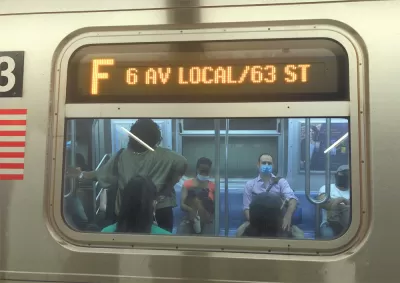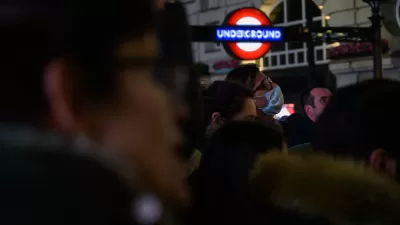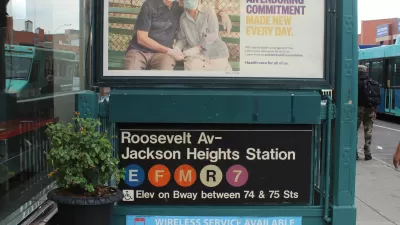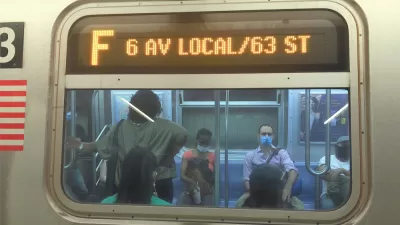Almost all heavy rail transit stations lost riders in 2020, but some stations lost far fewer riders than others. The data reveals lessons for transit planning beyond the end of the pandemic (whenever that happens).

Yonah Freemark shares the results of new analysis about how the pandemic has altered ridership patterns on U.S. heavy rail transit systems (i.e., the subway and el trains found in some U.S. cities—New York, Chicago, and Washington, D.C., and the San Francisco Bay Area in this study).
Here's how Freemark summarizes the findings of this analysis:
Though almost every station I studied saw fewer riders in 2020 compared with 2019, changes varied tremendously based on local characteristics, as neighborhoods with large Black populations, many households with low incomes, and more residents with lower levels of education lost fewer riders than other communities. Stations in employment-dense areas also lost considerably more riders than those in residential zones—likely because white collar workers with employment in downtowns were disproportionately able to work from home.
The source article linked below provides a lot more detail on each of the major findings. Freemark suggests that the ridership data should inform service choices by transit agencies that cater to the core riders that continued riding throughout the pandemic.

Alabama: Trump Terminates Settlements for Black Communities Harmed By Raw Sewage
Trump deemed the landmark civil rights agreement “illegal DEI and environmental justice policy.”

Planetizen Federal Action Tracker
A weekly monitor of how Trump’s orders and actions are impacting planners and planning in America.

The 120 Year Old Tiny Home Villages That Sheltered San Francisco’s Earthquake Refugees
More than a century ago, San Francisco mobilized to house thousands of residents displaced by the 1906 earthquake. Could their strategy offer a model for the present?

In Both Crashes and Crime, Public Transportation is Far Safer than Driving
Contrary to popular assumptions, public transportation has far lower crash and crime rates than automobile travel. For safer communities, improve and encourage transit travel.

Report: Zoning Reforms Should Complement Nashville’s Ambitious Transit Plan
Without reform, restrictive zoning codes will limit the impact of the city’s planned transit expansion and could exclude some of the residents who depend on transit the most.

Judge Orders Release of Frozen IRA, IIJA Funding
The decision is a victory for environmental groups who charged that freezing funds for critical infrastructure and disaster response programs caused “real and irreparable harm” to communities.
Urban Design for Planners 1: Software Tools
This six-course series explores essential urban design concepts using open source software and equips planners with the tools they need to participate fully in the urban design process.
Planning for Universal Design
Learn the tools for implementing Universal Design in planning regulations.
Clanton & Associates, Inc.
Jessamine County Fiscal Court
Institute for Housing and Urban Development Studies (IHS)
City of Grandview
Harvard GSD Executive Education
Toledo-Lucas County Plan Commissions
Salt Lake City
NYU Wagner Graduate School of Public Service





























